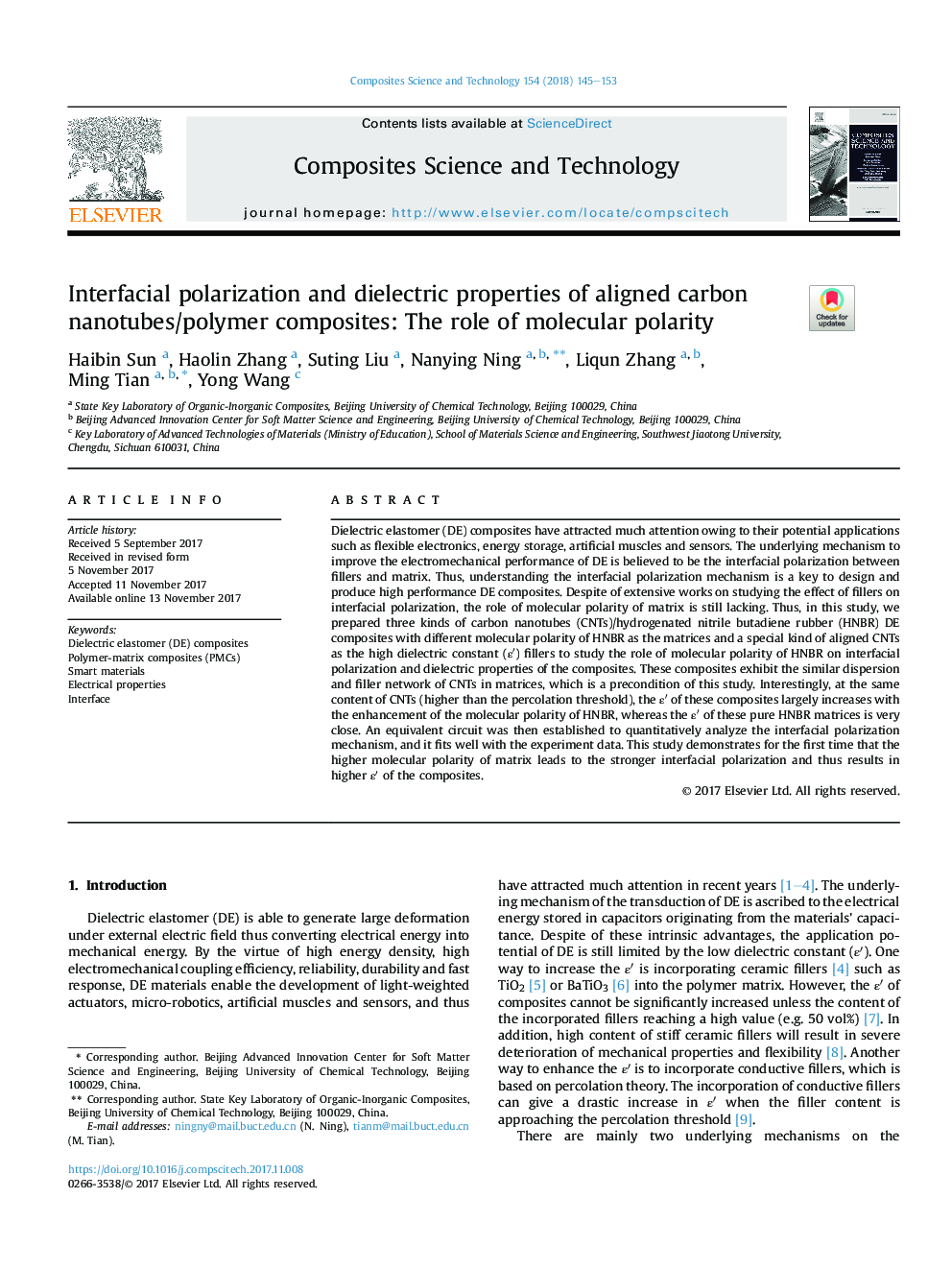| کد مقاله | کد نشریه | سال انتشار | مقاله انگلیسی | نسخه تمام متن |
|---|---|---|---|---|
| 7214986 | 1469471 | 2018 | 9 صفحه PDF | دانلود رایگان |
عنوان انگلیسی مقاله ISI
Interfacial polarization and dielectric properties of aligned carbon nanotubes/polymer composites: The role of molecular polarity
ترجمه فارسی عنوان
پلاریزاسیون بینایی و خواص دی الکتریک نانولوله های کربنی / کامپوزیت های پلیمری تراز: نقش قطب مولکولی
دانلود مقاله + سفارش ترجمه
دانلود مقاله ISI انگلیسی
رایگان برای ایرانیان
کلمات کلیدی
موضوعات مرتبط
مهندسی و علوم پایه
سایر رشته های مهندسی
مهندسی (عمومی)
چکیده انگلیسی
Dielectric elastomer (DE) composites have attracted much attention owing to their potential applications such as flexible electronics, energy storage, artificial muscles and sensors. The underlying mechanism to improve the electromechanical performance of DE is believed to be the interfacial polarization between fillers and matrix. Thus, understanding the interfacial polarization mechanism is a key to design and produce high performance DE composites. Despite of extensive works on studying the effect of fillers on interfacial polarization, the role of molecular polarity of matrix is still lacking. Thus, in this study, we prepared three kinds of carbon nanotubes (CNTs)/hydrogenated nitrile butadiene rubber (HNBR) DE composites with different molecular polarity of HNBR as the matrices and a special kind of aligned CNTs as the high dielectric constant (εâ²) fillers to study the role of molecular polarity of HNBR on interfacial polarization and dielectric properties of the composites. These composites exhibit the similar dispersion and filler network of CNTs in matrices, which is a precondition of this study. Interestingly, at the same content of CNTs (higher than the percolation threshold), the εⲠof these composites largely increases with the enhancement of the molecular polarity of HNBR, whereas the εⲠof these pure HNBR matrices is very close. An equivalent circuit was then established to quantitatively analyze the interfacial polarization mechanism, and it fits well with the experiment data. This study demonstrates for the first time that the higher molecular polarity of matrix leads to the stronger interfacial polarization and thus results in higher εⲠof the composites.
ناشر
Database: Elsevier - ScienceDirect (ساینس دایرکت)
Journal: Composites Science and Technology - Volume 154, 18 January 2018, Pages 145-153
Journal: Composites Science and Technology - Volume 154, 18 January 2018, Pages 145-153
نویسندگان
Haibin Sun, Haolin Zhang, Suting Liu, Nanying Ning, Liqun Zhang, Ming Tian, Yong Wang,
